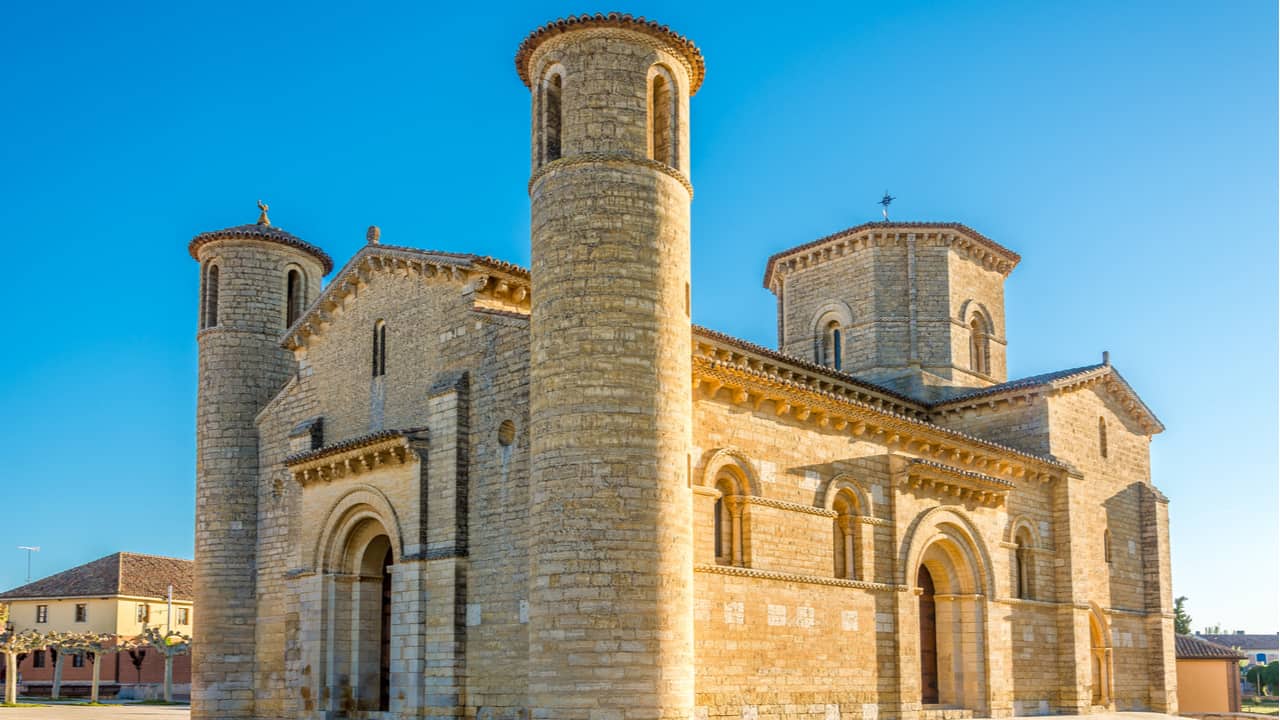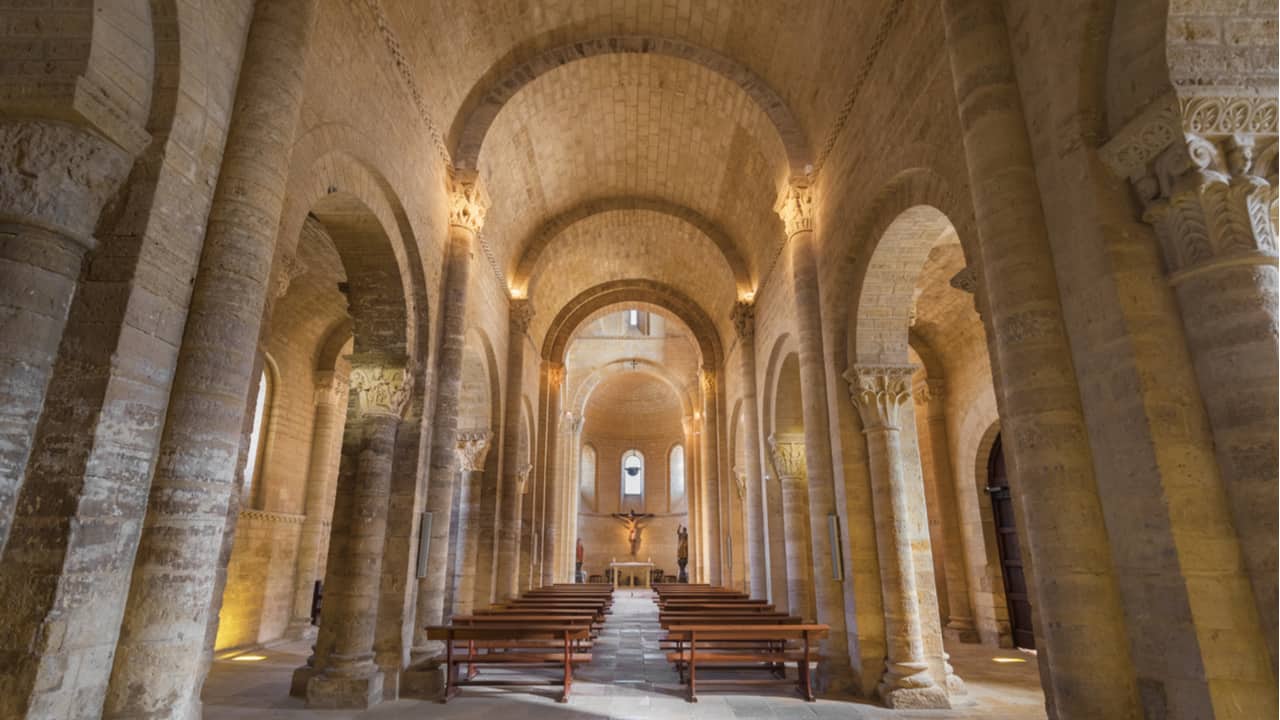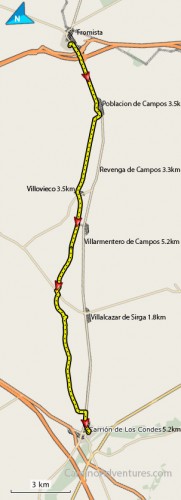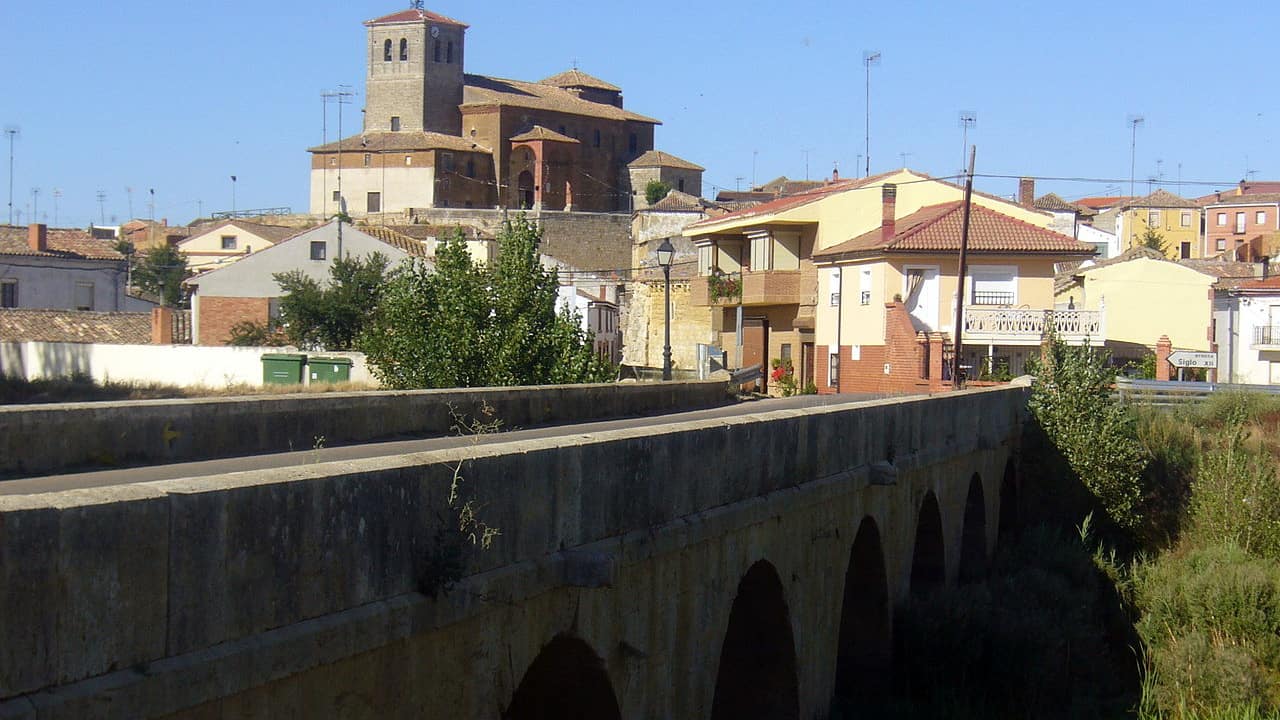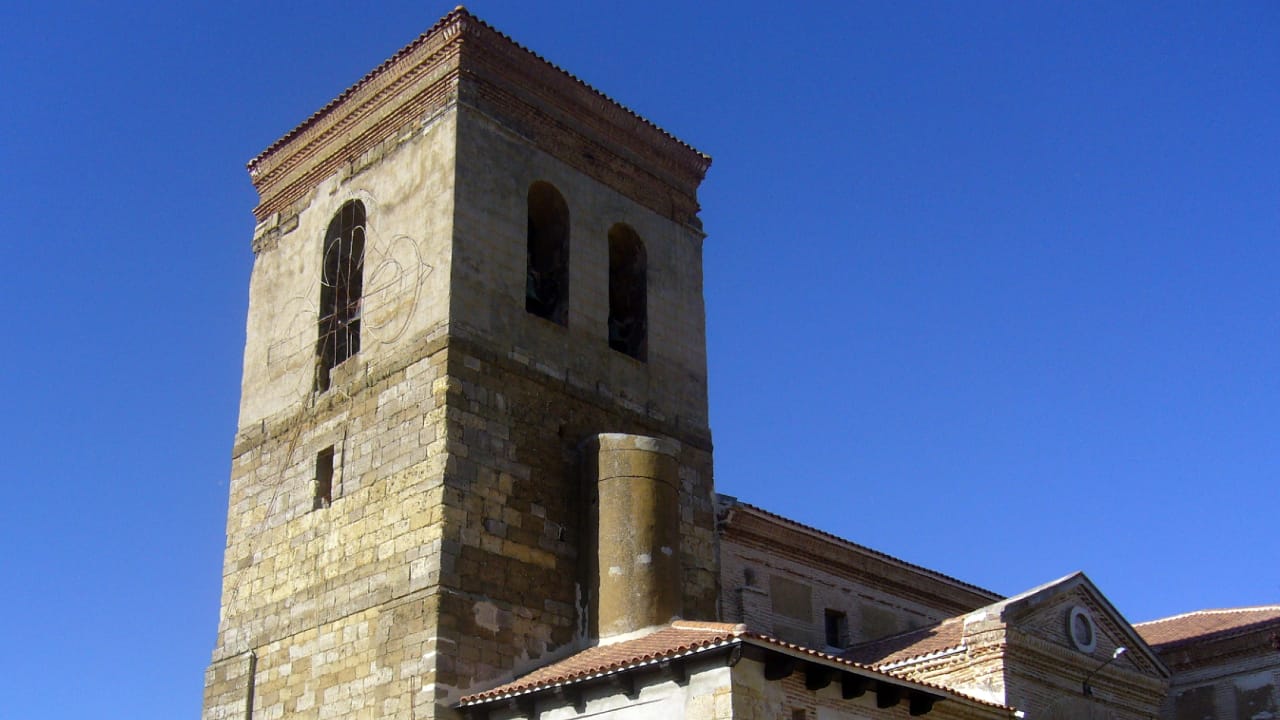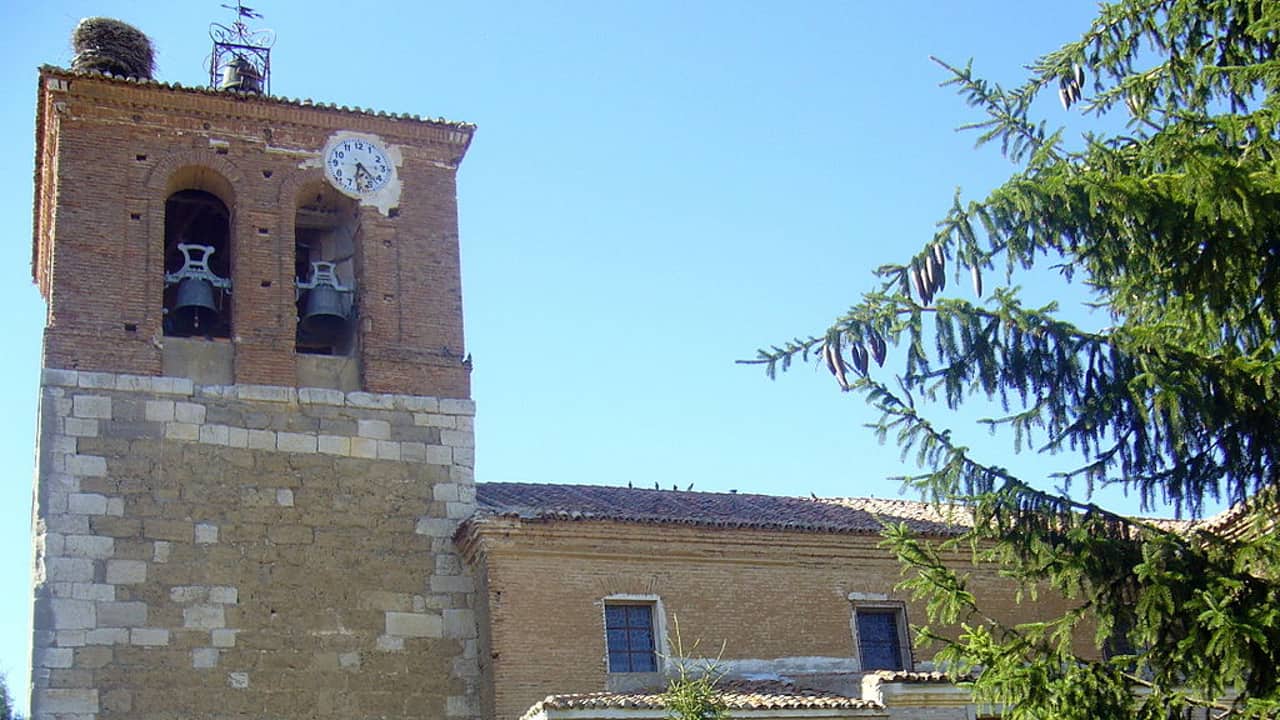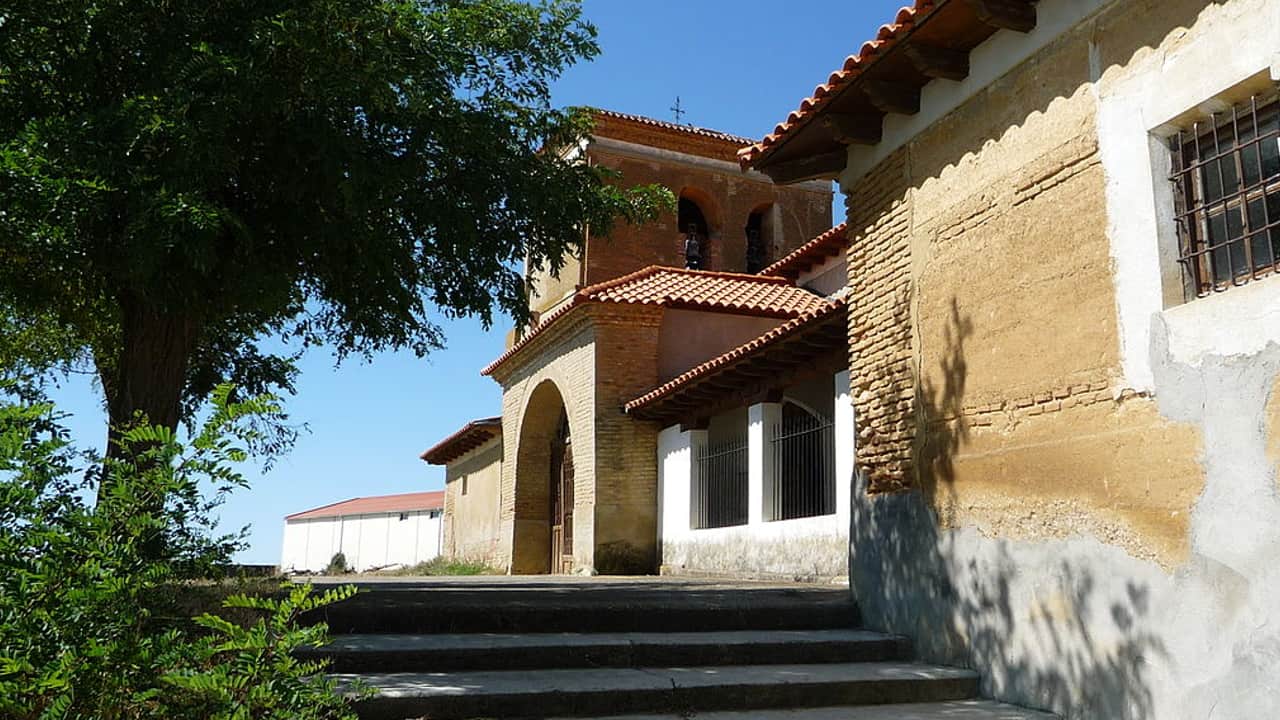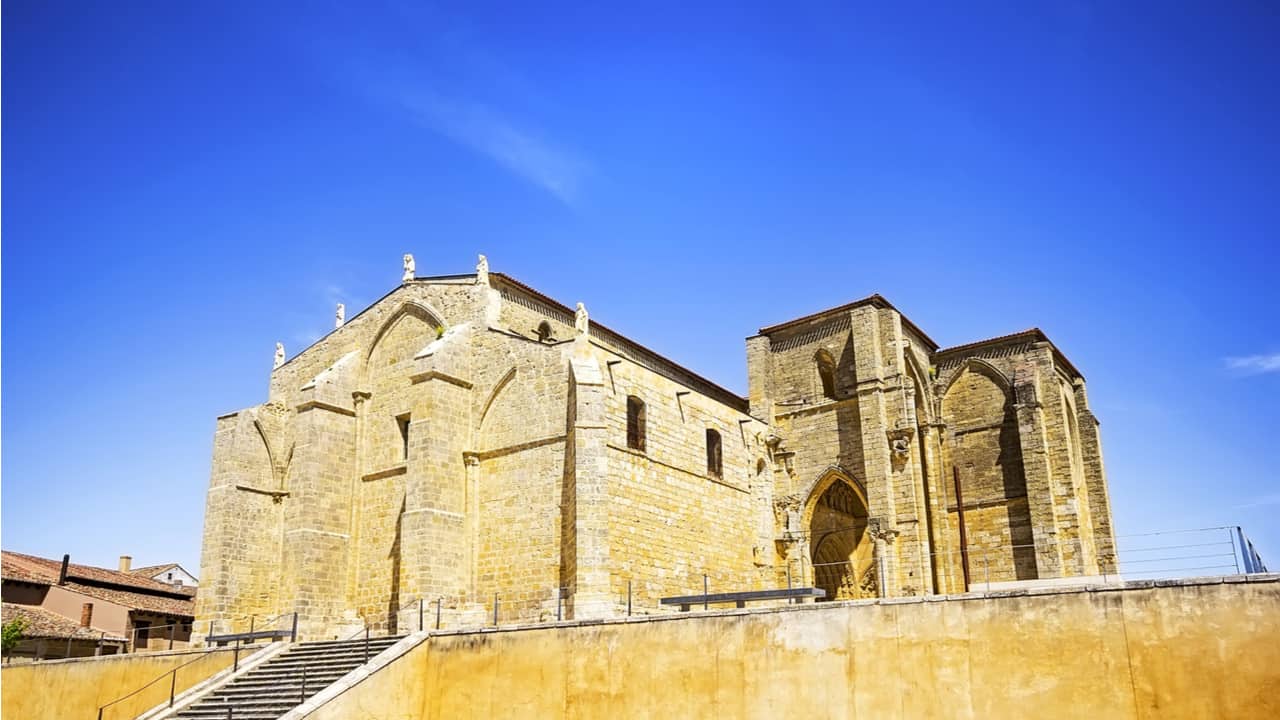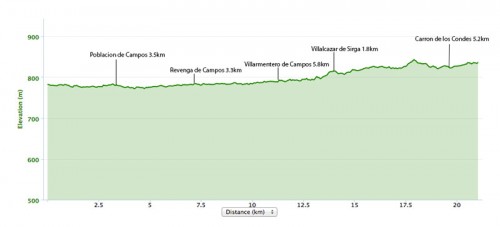Fromista, population circa 800, comes at the end of the sixth stage in Picaud’s original pilgrims’s guide. It is believed the town was first inhabited by the Celts, then Romans, to be completely destroyed by the Moors during the 8th century.
It was repopulated during the 10th century; aided in part by Donna Mayor, wife of Sancho III, who founded a Benedictine monastery.
Today the only surviving part of the monastery is the Church of San Martin. A statue of San Telmo, (St Elmo), the patron saint of sailors, presides over the village square; he was born here in 1190 and his remain are interred in the cathedral in Tuy, Pontevedra, on the Camino Portugues.
The Romanesque Church of San Martin is an imposing building dominating the center of the plaza where it is located. The design of San Martin was based on Jaca Cathedral, by architects from Jaca. The interior has excellent carved capitals and outside there is a series of carved corbels circling the eaves.
The church has been completed restored leaving only the 13th century Gothic Christ as the original piece.
The 16th century Gothic Church of San Pedro contains a figure of St James the pilgrim, along with some fine paintings in its museum.
The 16th century Plateresque Church of Santa Maria del Castillo was built over the original 14th-century church commissioned by Fernando Sanchez de Tobar; it contains a retable by the Castilian painter Fernando Gallego. For centuries a shrine containing a Host was displayed to pilgrims.
This was a deathbed miracle associated with the church of a man who had been excommunicated for not paying a debt. On his deathbed he could not lift the consecrated Host from the paten his mouth until he was reinstated to the Church; as soon as he was, the Host entered his mouth of its own accord.
Currently, the paten and other related objects are displayed in the museum in San Pedro.
Today’s Walk: 19 km or 21 km (11.8 mi or 13 mi)
Day 16 on the Camino Frances is an easy flat walk continuing along the meseta. The roughly 19km today will take about 5 hours walking at an easy pace, many will take this opportunity of easy walking to complete a greater distance, instead of only Fromista to Carrion de Los Condes.
Walk your own Camino, don’t be constrained by guide books. The books are helpful to know where to stop and what to see, but walk at your own pace as some days you will have more energy than others.
After Poblacion de Campos there is a choice of two routes, however, the second is much less traveled and less well marked. The map highlights the lesser walked route as the main route follows the road.
The first 3.5 km (2.2 mi) of today is along the side of the road, P-980. It is a flat and easy underfoot purpose-built path for pilgrims, this path continues all the way to Carrion de Los Condes.
At the entrance of Poblacion de Campos there is the 13th-century Romanesque Hermitage of San Miguel which once belonged to the Knights of Malta. The Hermitage is contained within a small park and picnic area.
Poblacion de Campos
3.5 km (2.2 mi), water, bar, food shop
This is a small farming village with one hostel, a hotel, and several bars where you can eat. The hotel has a restaurant attached.
The village was first inhabited in the 9th century and at one time had a population of nearly 1,000. Today the population is estimated at 200.
The Baroque Church of Santa Maria Magdalena dates from the 16th century. Inside there is a Romanesque baptismal font and a 13th-century image of the Virgin del Socorro (Our Lady of Help).
Further along on the left and below the level of the street is the Hermitage of La Virgin del Socorro, which was restored in 1973.
As you leave the village just before the bridge over the Rio Ucieza there is a choice of routes. The main route follows the road on a man-made path with very little shade, the other follows along the river and has some shade from the trees that grow along the side of the river.
The Roi Ucieza path is quieter and more pleasant however there is only one village with no guarantee of water or food being available. Additionally along the river is the only place on the Camino Frances where I was bitten by a mosquito. There are no markings along the river route, but there are no choices to be made; it is a simple path within sight of the marked route.
On the second route make sure you have enough food and water from Poblacion de Campos as you will be walking along uneven paths for the rest of the day with nowhere to collect more water or food.
River Route
Just as you are leaving Poblacion de Campos turn right before the bridge on Cruz de Malta follow the road for about 200 meters and then join the dirt path. You will have the river far away on your left until Villovieco. The river route is about 2km longer than the road route
Villovieco
3.4 km (2.1 mi), water, cafe
At the end of the village just after you turn left over the river there is a cafe, however, I passed at about 8 am and it was not open during the summer. There is a fountain in the village for water, the last opportunity to fill up for 13 km (8 mi).
There is the Renaissance church of Santa Marie in the village. The altar is decorated with several Santiago motifs.
Leaving Villovieco turn right after you cross the river and continue on the dirt path now with the river beside you on the right. After 4.9 km (3 mi) there is a small road where you can see the Hermitage of Our Lady of the River, inside there is an image of Santiago.
At this point, you can choose to join the road route at Villalcazar de Sirga by walking up this country road. Otherwise, turn right onto a path just after the Hermitage. This path will take you the rest of the way to Carrion de Los Condes across fields.
Road Route
From Poblacion de Campos cross the river, the path along the side of the road will pass through Revenga de Campos, Villarmentero de Campos, and Villalcazar de Sirga.
Revenga de Campos
3.3 km (2 mi), water, bar
This is one of those many Spanish hamlets that you will pass through that will leave little impression on your memory. There is the Baroque Parish Church of St Lawrence.
Villarmentero de Campos
5.2km (3.2 mi), water, bar
Parish church dedicated to St Martin of Tours. This town celebrates the day of St Martin on the 4th of July based on the old Spanish calendar’s summer date, rather than on the 11th November the traditional date of his death.
Villalcazar de Sirga
1.8 km (1.1 mi), all services
There is a bar which is popular with pilgrims opposite the church.
This small town’s skyline is dominated by the Romanesque Church of Santa Maria la Blanca, (St Mary the White, Virgin Mary). The church, built in the shape of a latin cross, started construction in the later part of the 12th century by the Templars and was finished in the 14th, it is now a Spanish national monument.
As can be seen from its structure this is a fortress church. This church is definitely worth taking the time to see, especially the enormously tall porch with its richly carved portal.
Inside there is a retable portraying the life and death of St James and a 16th-century figure of him in pilgrims clothes, it is most comprehensive retable of St James along the Camino Frances before Santiago. The retable illustrates St James meeting Jesus, his martyrdom, and him being moved to Galicia.
Villalcazar de Seirga is an example of the Camino de Santiago route being moved. The Codex Calixtinus does not mention this town, as the Camino route was north of here via Arconada. However, due to the news of the miracles attributed to the Virgin Blanca the road to Santiago shifted over time and Villalcazar became a minor pilgrimage destination.
The miracles attributed to the Virgin here are said to be of pilgrims on their return from Santiago: a German crippled pilgrim was healed on his way home, a French pilgrim could not enter the church until he begged forgiveness of the Virgin, another French paralyzed pilgrim recovered use of her body, a blind man recovered his sight.
If you decide to stay overnight in Villalcazar there is an excellent restaurant opposite the church on the plaza called Mason de Pablo. The restaurant is well known for its excellent food, banquets in the evening and it is decorated with pilgrim paraphernalia.
Carrion de los Condes is 5.2 km (3.2 mi) from Villaclazar. It has all services.
The elevation map below shows a distance of 21 km (12 mi). However, if you walk the Road Route it is only 19km.

I love hiking, backpacking, and camping. From the Camino de Santiago to the West Highland Way in Scotland or simply a great day hike on the weekend. Hiking refreshes me, my mind, and keeps my body reasonably fit. So far I have walked three Camino routes and many other long distance hikes in the UK, Canada, and around the rest of Europe. One of the best was my hike up Ben Nevis.

